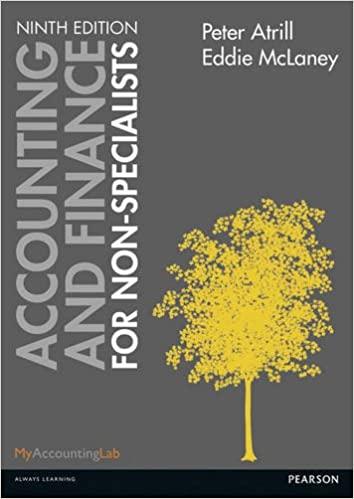Question
CASE ASTER The multi-producer company ASTER provides for one of its products, product A, the following cost data referring to a quarterly activity: Direct manufacturing
CASE ASTER
The multi-producer company ASTER provides for one of its products, product A, the following cost data referring to a quarterly activity:
Direct manufacturing costs per unit produced: Raw Material consumption/cost, variable 50 Labor cost, variable 125 Supplies cost, variable 100
Commercial costs per unit sold: Sales commission per unit 10
Indirect costs/Overheads for the quarter attributed to product "A" Manufacturing costs, fixed 15.000 Administration costs, fixed 2.500
The above costs are repeated for each quarter of the current financial year.
The company controls its warehouses through a perpetual inventory system and uses the LIFO method in the valuation of inventory issues. At the beginning of the year, there were no stocks of product A.
The manufacturing and sales data for product A for the first three quarters of the current year and it's accumulated over the three quarters are as follows:
| Units | 1st quarter | 2nd quarter | 3rd quarter | Accumulated |
| Units produced | 240 | 300 | 360 | 900 |
| Units sold | 200 | 280 | 420 | 900 |
Product "A" has a sales price of 2.000 per unit maintained throughout the current year.
REQUESTED, in relation to product "A":
1. Present the analytical income statement for each quarter and its accumulated over three quarters (4 periods, 4 columns), using the absorption or full cost system.
2. Present the analytical income statement for each quarter and its accumulated over three quarters (4 periods, 4 columns), using the variable or direct cost system.
3. Conclusions obtained for each quarter and their accumulated when relating production and sale with the analytical results (income or loss) of the activity obtained in sections 1 and 2. Numerically justify the differences obtained when comparing the results (income or loss) obtained in the full cost and direct cost systems in each of the periods presented.
4. Do the above three points using the weighted Average cost and the FIFO as valuation methods of the inventory issues.
Step by Step Solution
There are 3 Steps involved in it
Step: 1

Get Instant Access to Expert-Tailored Solutions
See step-by-step solutions with expert insights and AI powered tools for academic success
Step: 2

Step: 3

Ace Your Homework with AI
Get the answers you need in no time with our AI-driven, step-by-step assistance
Get Started


